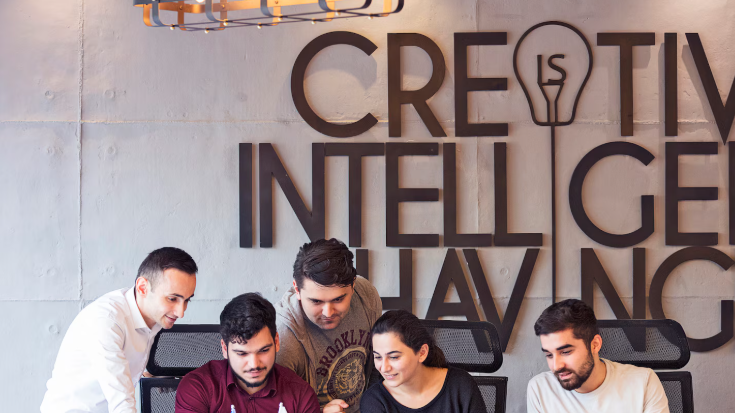Learn about immigration for tech startups. Discover visa options, requirements, and how top 100 tech startups in the USA navigate immigration challenges in 2025.

In September 2025, the Trump administration announced that H-1B visa fees would jump from $2,000-$5,000 to $100,000 per application. That's not a typo. One hundred thousand dollars. For tech startups in the USA, this change feels like a punch to the gut. Early-stage companies already struggle with tight budgets. Now they need to find six figures just to hire one skilled engineer from overseas.
The same administration that raised fees also opened doors in January 2025. New rules allow founders to sponsor themselves through their own LLCs for H-1B visas. This eliminated the traditional employer-employee relationship requirement that blocked entrepreneurs for years. So immigration for tech startups got harder and easier at the same time. This is what we call the US immigration system.
Ready to navigate these changes successfully? Beyond Border can help you understand which visa pathway works best for your tech startup and budget.
Immigration for startups isn't one-size-fits-all. Multiple visa types exist, each designed for different situations. Beyond the major options below, the International Entrepreneur Rule allows foreign entrepreneurs with funded startups to receive parole for up to 30 months initially. This requires at least $311,071 in qualified investment or $124,429 in government grants as of October 2024.
The H-1B used to be straightforward for employees. Companies filed petitions, entered a lottery, and hoped to win one of 85,000 annual slots. Starting in January 2025, the H-1B program underwent major restructuring allowing self-sponsorship through applicants' own LLCs, making the program more independent and flexible. Founders can now petition for themselves if they own at least 50% of a US company and have a board that can supervise them.
The new $100,000 fee now applies to each new H-1B application. For startups bootstrapping on limited funds, this fee puts H-1B visas out of reach. One startup founder calculated that the fee would cost the tech industry $5.5 billion annually to hire H-1B tech workers, up from $200-400 million previously. Some experts predict exemptions for national interest cases. But as of October 2025, the fee stands.
The O-1 visa has undergone updates introducing new eligibility requirements likely to benefit professionals with backgrounds in future technologies, from certified patents to acclaimed press coverage. The O-1 requires no investment. You just need to prove extraordinary ability in your field by meeting at least three of eight criteria set by immigration authorities.
Companies report seeing more than 50% increase in early-stage founders exploring O-1 visas, though spouses cannot work on this visa type. For what tech startups are profitable, this matters less. Established founders with revenue can support families. But pre-revenue startups often need both founders working.
The E-2 visa works great for certain nationalities. You invest in a US business (typically $100,000-$300,000), and you can live here running that business. Your spouse gets work authorization automatically. India, China, Brazil, and Russia don't have E-2 treaties with the US. If you hold a passport from these countries, E-2 isn't available. UK founders, however, can use E-2 easily. Same with many European and Latin American countries.
The L-1A visa lets you transfer yourself to a new US office as a manager or executive. You must have worked for your foreign company for at least one year in the past three years. The US entity needs a qualifying relationship with the foreign company. This works perfectly for tech startups in the USA that are actually expanding operations rather than starting from scratch.
Confused about which visa fits your situation? Book a consultation with Beyond Border's immigration specialists today.

The biggest top 100 tech startups approach immigration differently than early-stage ventures. Amazon ranked number one in the tech sector for H-1B visa approvals last year with 14,764 approvals, while Microsoft secured 4,725 of the visas. These companies have dedicated immigration teams and deep pockets.
One founder noted that the H-1B fee increase means "one H-1B hire will now equal up to 20 remote hires in many other countries". So immigration tech startup companies are pivoting strategies. Forbes ranked companies like Cribl (valued at $2.5 billion with $200M+ annual recurring revenue) and Wiz among the best US startups to work for in 2025. These successful companies prove that navigating immigration challenges is possible with the right strategy.
Companies like Boundless and Casium have built technology to speed visa applications, assess candidate suitability, collect data on successful applications, and provide legal support. These immigration tech startup platforms help founders by doing things like tracking success rates for different visa types, automating document collection and filing, providing multi-track strategies for different talent profiles, and offering faster processing through technology.
Immigration legal tech startup Alma reported seeing a 100x spike in inquiries since the H-1B fee announcement, with clients scared and anxious about competing with larger companies.
Beyond Border combines expert legal guidance with streamlined processes to make immigration manageable for tech startups of all sizes.
Understanding what tech startups are profitable reveals patterns in how successful companies overcome immigration hurdles. Only 40% of startups turn a profit overall. 40% profitable, 30% breaking even, and 30% operating at a loss. The companies that succeed often have strong immigration strategies from day one.
The subscription service model continues to be one of the most profitable and fastest-growing business models, projected to reach $1.5 trillion in value by 2025. SaaS companies can hire remote international teams more easily than hardware startups requiring on-site work. Some of the most valuable tech startups in the USA right now include OpenAI at a $300 billion valuation, Stripe at $65 billion, Databricks and Anthropic each at $62 billion, and xAI at $50 billion.
AI companies succeed because they budget immigration costs into their financial planning early, diversify visa strategies across multiple types, work with experienced immigration attorneys, build remote-first cultures when necessary, and prioritize hiring exceptional talent worth the investment.
Beyond Border specializes in helping tech founders navigate every step of this process. Let us create a customized immigration roadmap for your startup journey.
Immigration strategy is becoming core to business planning rather than just a compliance issue, with companies viewing it as a strategic growth tool. The key is navigating immigration intelligently. Don't let visa issues derail your vision. With proper planning and expert guidance, foreign founders can successfully build tech startups in the USA that compete with the top 100 tech startups globally.
What is immigration for tech startups and why does it matter in 2025? Immigration for tech startups refers to visa pathways allowing foreign founders to legally live and work in the US while building companies, which became critical in 2025 due to new H-1B self-sponsorship rules and the controversial $100,000 fee increase affecting how startups access international talent.
How do top 100 tech startups in the USA handle immigration challenges? The top 100 tech startups like Amazon and Microsoft have dedicated immigration teams and budgets to sponsor thousands of H-1B visas annually, while smaller startups increasingly pivot to O-1 visas, remote international hiring, and immigration tech platforms to compete for global talent cost-effectively.
What tech startups are profitable despite immigration costs? Understanding what tech startups are profitable reveals that only 40% turn profits overall, with successful companies like Cribl ($200M+ revenue) and subscription-based SaaS businesses building immigration costs into financial planning early and diversifying visa strategies across multiple types.
What are the best immigration options for tech startup founders? Immigration for startups offers several pathways including the O-1 visa for extraordinary ability (no investment required), E-2 for treaty country investors ($100K-$300K), L-1A for expanding existing businesses abroad, and the newly reformed H-1B allowing self-sponsorship through founder-owned LLCs.
How are immigration tech startups helping founders navigate visa challenges? Immigration tech startup companies like Boundless and Casium use technology to speed applications, track success rates, and provide multi-track visa strategies, with these platforms reporting 50-100x spikes in inquiries since the 2025 H-1B fee increase as founders seek efficient solutions.